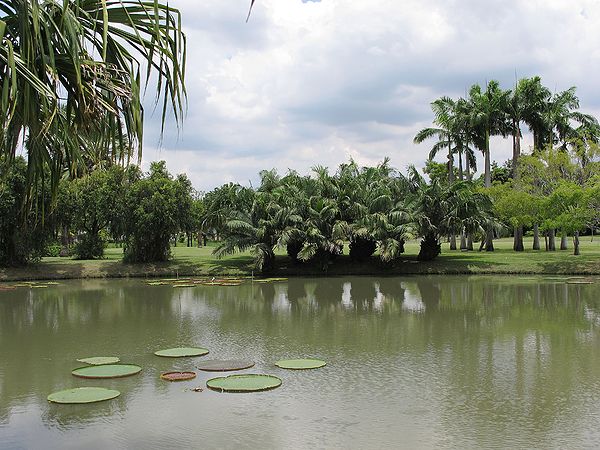Difference between revisions of "Elaeis oleifera"
| Line 40: | Line 40: | ||
image:JosemDSC04363.jpg|Ciudad Neily, Costa Rica. Photos of Elaeis oleifera, at a friend's house and paddocks. Photo by Jose Maria Cornelis. | image:JosemDSC04363.jpg|Ciudad Neily, Costa Rica. Photos of Elaeis oleifera, at a friend's house and paddocks. Photo by Jose Maria Cornelis. | ||
image:JosemDSC04387.jpg|Ciudad Neily, Costa Rica. Photos of Elaeis oleifera, at a friend's house and paddocks. Photo by Jose Maria Cornelis. | image:JosemDSC04387.jpg|Ciudad Neily, Costa Rica. Photos of Elaeis oleifera, at a friend's house and paddocks. Photo by Jose Maria Cornelis. | ||
| − | image:Josem33b0.jpg| | + | image:Josem33b0.jpg|Leu Gardens in Orlando, FL. Photo by Jose Maria Cornelis. |
image:JosemDSC04388.jpg|Ciudad Neily, Costa Rica. Photos of Elaeis oleifera, at a friend's house and paddocks. Photo by Jose Maria Cornelis. | image:JosemDSC04388.jpg|Ciudad Neily, Costa Rica. Photos of Elaeis oleifera, at a friend's house and paddocks. Photo by Jose Maria Cornelis. | ||
image:Arx1256994548z.jpg|Photos taken at the Metropolitan Park of Panama. Photo by Zulli Franceschi. | image:Arx1256994548z.jpg|Photos taken at the Metropolitan Park of Panama. Photo by Zulli Franceschi. | ||
Revision as of 22:06, 22 March 2017
| Elaeis (eh-leh-iss) oleifera (oh-leh-ihf-EHR-ah) | |||||||
|---|---|---|---|---|---|---|---|
 Osa Peninsula of Costa Rica. Photo by Dr. Reinaldo Aguilar. | |||||||
| Scientific Classification | |||||||
| |||||||
| Synonyms | |||||||
|
| |||||||
| Native Continent | |||||||
|
| |||||||
| Morphology | |||||||
| |||||||
| Culture | |||||||
|
| |||||||
| Survivability index | |||||||
|
| |||||||
| Common names | |||||||
|
| |||||||
Contents
Habitat and Distribution
Brazil North, Colombia, Costa Rica, Ecuador, French Guiana, Honduras, Nicaragua, Panamá, Peru, and Suriname. Scattered throughout Central America and Northern South America, from Venezuela to Peru. In Ecuador it is less common in the east lowlands on poorly drained soil and along streams and rivers. Its present distribution may, at least in part, be anthropogenically determined.Description
Understorey palm. Stem subterranean or prostrate, 10-20 cm in diameter, erect only for a few meters. Leaves 3-4 m long; pinnae 30-90 on each side, regularly inserted in one plane, the central ones to 60 cm long and 4 cm wide. Inflorescence 50-80 cm long, with about 50 branches, these 10-15 cm long, with flowers borne singly and partly sunken into pits; male branches 5-10 mm in diameter, with densely positioned flowers to 5 mm long at anthesis; female branches to 15 mm in diameter, with more loosely inserted flowers, to 1 cm long. Fruits yellowish orange to red, oblong, about 3 cm long. (Borchsenius, F. 1998)/Palmweb. Editing by edric.
Culture
Sunny, moist, but well drained position. Tropical in its requirements.
Comments and Curiosities
Compared to its African relative, E. guineensis, which today is cultivated in enormous numbers everywhere in the tropics, the American oil palm is outright rare. It is naturally distributed in Central America, from Honduras to Colombia, and in the Amazon region, where its distribution is patchy however and generally connected with human settlements, suggesting that it may have been introduced there. While the African oil palm can be a fairly scruffy looking plant, its American cousin makes a much more elegant appearance, with long, flat, gracefully recurving leaves. Its oil yield is not as high though. It will flourish under the same conditions that E. guineensis does and has a preference for rich, wet soils. (Borchsenius, F. 1998)/Palmweb.
Uses: Peasant women in northern Colombia use a blackish, fatty substance extracted from the fruit of the nolí to dress their hair. It is supposed to combat dandruff and to prevent the hair from falling out, or turning gray.
- IMAGE GALLERY
External Links
- Glossary of Palm Terms
- MODERN BOTANICAL LATIN
- "Just To Be Clear"
- http://paulcloesen.50webs.com/Oilpalm_archivos/Interspecific.htm
References
Phonetic spelling of Latin names by edric.
Special thanks to Geoff Stein, (Palmbob) for his hundreds of photos.
Special thanks to Palmweb.org, Dr. John Dransfield, Dr. Bill Baker & team, for their volumes of information and photos.
Glossary of Palm Terms; Based on the glossary in Dransfield, J., N.W. Uhl, C.B. Asmussen-Lange, W.J. Baker, M.M. Harley & C.E. Lewis. 2008. Genera Palmarum - Evolution and Classification of the Palms. Royal Botanic Gardens, Kew. All images copyright of the artists and photographers (see images for credits).
Borchsenius, F.1998. Manual to the palms of Ecuador. AAU Reports 37. Department of Systematic Botany, University of Aarhus, Denmark in collaboration with Pontificia Universidad Catalica del Ecuador.
Many Special Thanks to Ed Vaile for his long hours of tireless editing and numerous contributions.

















































